AXES
This versatile tool is essentially as old as humanity itself. From primitive stone axes to the most modern tactical tomahawks, axes always carry a powerful aura. It’s a tool that immediately conveys its strength and capabilities when held.
Axes have been made since ancient prehistoric times, initially by chipping various suitable types of stone. The chipped axe head was mounted on a wooden handle of the appropriate shape. Sometimes it was a root, sometimes a branch with a proper knot at the end.
Later, stone axes began to be refined by polishing and even drilling holes for the handle. Such Neolithic axes or axe-hammers are almost indistinguishable in shape from today's splitting axes.
Paleolithic Axe
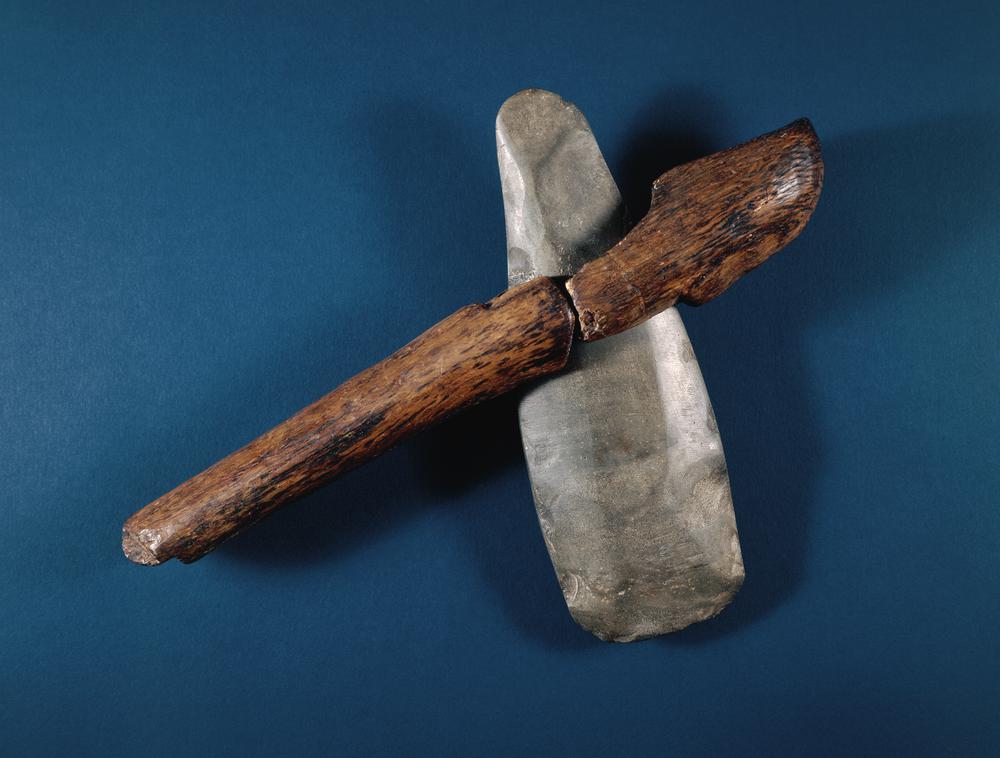
History
Prehistoric and Ancient Mediterranean
Stone hand axes were used during the Paleolithic period for hundreds of thousands of years. It seems that the first stone axes with points were made around 6000 BC during the Mesolithic period. Technological development continued in the Neolithic with much wider use of hard stones alongside flint and chert, and increased use of polishing to improve the axe’s properties. Axes proved critical in woodworking and became cult objects (e.g., the entry for Scandinavian axemen, who considered their axes as high-level cultural items). Such stone axes were made from a wide range of tough rocks, such as picrite and other igneous or metamorphic rocks, and were widespread in the Neolithic period. Many found axe heads were probably used primarily for splitting wooden beams and as hammers for construction purposes (e.g., driving stakes into the ground).
Medieval Period
Battle axes were very common in Europe during the Migration Period and the subsequent Viking Age, and they are depicted on the Bayeux Tapestry from the 11th century, showing Norman knights on horseback against Anglo-Saxon foot soldiers. They continued to be used throughout the rest of the medieval period, with notable axe-wielders being warriors in the 12th, 13th, and 14th centuries.
English King Stephen famously used a "Danish axe" at the Battle of Lincoln in 1141. One account says he used it after his sword broke, while another says he used the sword only after the axe broke – take your pick :D
Richard the Lionheart was often depicted in Victorian times wielding a large battle axe, though the mentions are sometimes exaggerated, as befits a national hero. However, Richard is recorded as using a Danish axe on the relief of Jaffa.
So-called Dane Axe
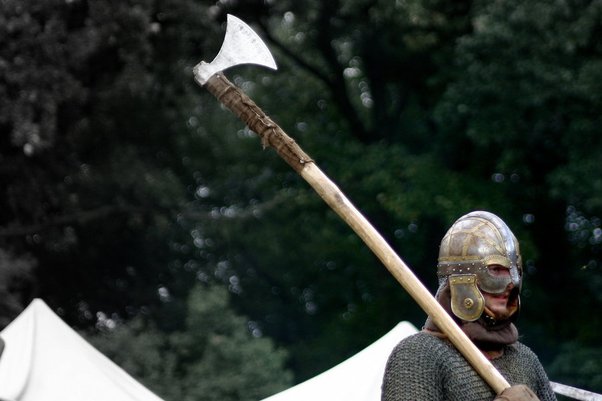
Robert the Bruce, King of Scotland, used an axe to defeat Henry de Bohun in combat at the start of the Battle of Bannockburn in 1314. Given that Bruce was on horseback, it’s likely this was a one-handed axe. Among heavily armored mounted warriors, axes enjoyed a revival in the 15th century.
In the 14th century, the use of axes was increasingly recorded by Froissart in his Chronicles, documenting engagements between the kingdoms of France and England and the rise of professional (and mercenary) armies in the 14th century. It is recorded that King John II used one at the Battle of Poitiers in 1356 and Sir James Douglas at the Battle of Otterburn in 1388. The Bretons were apparently notable axe users, with well-known mercenaries Bertrand du Guesclin and Olivier de Clisson wielding axes in battle. In these cases, the type of battle axe – whether a Danish axe or proto-poleaxe – is not recorded.
Most medieval European battle axes had a socketed head (meaning the thicker, blunt end of the blade contained a hole into which the wooden shaft was inserted), and some included langets – long strips of metal attached to the front surfaces of the handle. These were to prevent damage during battle. The cheeks of the axe occasionally featured engraved, etched, stamped, or inlaid decorative patterns. Late-period battle axes tended to be of all-metal construction.
Such medieval weapons as the halberd and poleaxe were variants of the basic form of the battle axe.
Axe with Langet – protection for the handle from damage
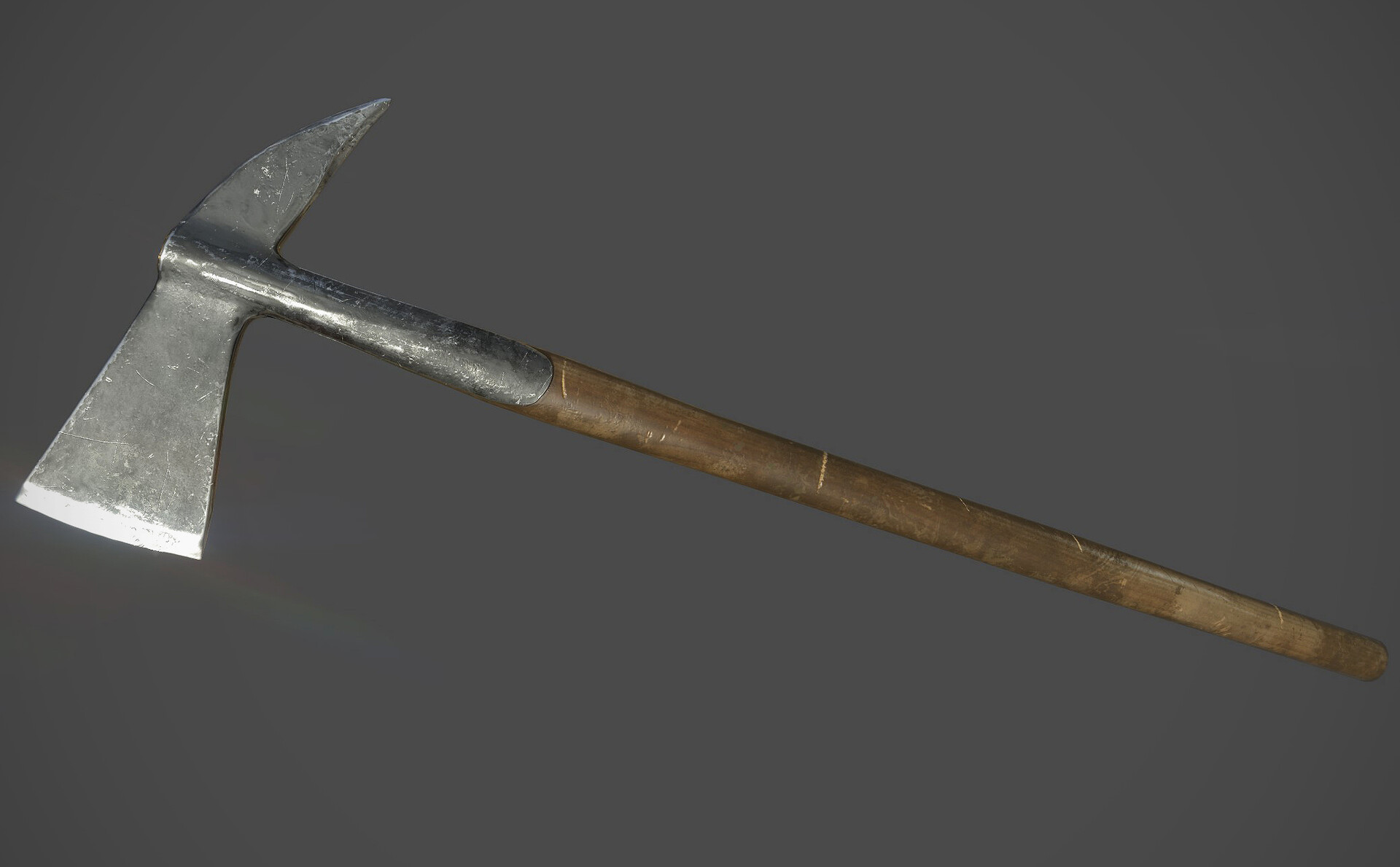
Axes After the Medieval Period
Battle axes were eventually phased out of use by the end of the 16th century, as military tactics increasingly revolved around the use of gunpowder. However, as late as the 1640s, Prince Rupert – the Royalist general and cavalry commander during the English Civil War – was depicted with a battle axe, and this was not just a decorative symbol of authority: it was a "short poleaxe," adopted by Royalist cavalry officers to penetrate soldiers’ helmets in close combat.
In Scandinavia, however, the battle axe continued to be used alongside the halberd, crossbow, and pole until the early 18th century. A law introduced in 1604 required all farmers to own weapons to serve in the militia. A popular choice was the battle axe of the Norwegian peasant militias, far more powerful than the halberd, and yet effective against mounted enemies. Many such weapons were ornately decorated, but their functionality is evident in that the axe head was mounted at an angle: slightly tilted upward, with a pronounced forelean in the handle, designed to enhance their effectiveness against armored opponents by concentrating force on a narrower area.
Battle Axe of the Norwegian Peasant Militias

During Napoleonic times and later in the 19th century, farriers in military service carried long, heavy axes as part of their equipment. Though they could be used in an emergency for combat, their primary use was logistical: the hooves of dead military horses had to be removed to prove that they had actually died (and weren’t stolen). Napoleon's scouts also carried axes, which were used to clear vegetation – a practice used by similar units in other armies.
Axe in Rituals and Religion
The axe has been used as a symbol since ancient times. During the Neolithic, it was worn by religious and tribal leaders as a sign of their power. It became so valued that it was often given as a gift to various deities. It also played a religious role in ancient Greece, specifically the double-edged axe known as the labrys. Many such axes and their depictions from Minoan culture have been found on the island of Crete. It is believed that they were related to religious rituals, used by local priestesses in the sacrifice of animals. In modern history, it became a symbol of Greek fascists.
LABRYS
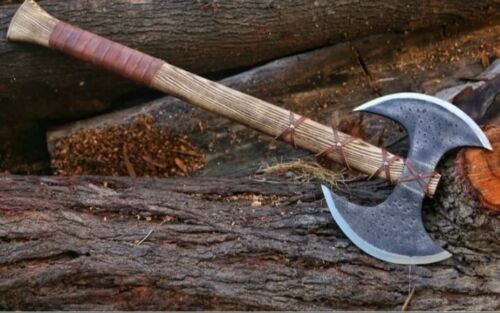
The axe also appears in Slavic culture, specifically as Perun's Axe, which is the counterpart to the Norse god Thor's hammer Mjolnir. The axe symbolizes the rule of the god Perun or Parom, who governs thunder, storms, and rain, and throws fiery bolts – lightning – with his axe. Parom is also the god of war, weapons, as well as fertility and agriculture.
In ancient Rome, the axe was part of the so-called fasces – a bundle of rods tied with a red ribbon with an axe protruding. The fasces were carried by the personal bodyguards of the consul as a sign of their power and authority. Like the Greeks, the Italians later adopted it as a marketing symbol for Benito Mussolini's fascist party.
The phrase "to bury the hatchet" is also well known, meaning to end an ongoing conflict, dispute, or hostility. This phrase originates from North America during the colonization period. During negotiations between Native Americans and colonists, all weapons had to be buried first before talks could begin.
The Axe as a Weapon and Combat Tool
Throughout human history, everyday objects have been pressed into service as weapons. Axes, given their ubiquity, are no exception. In addition to axes designed for combat, many battle axes also served as tools. Axes could also be modified into deadly throwing weapons (e.g., the francisca – which we also offer). Axes were often cheaper than swords and much more accessible.
CONDOR Francisca Throwing Axe

In general, battle axes weigh much less than modern splitting and chopping axes because they were designed for cutting and slicing tissue, not wood. As a result, slightly narrow blades for slicing were the norm. This allows for deep, devastating wounds. Moreover, a lighter weapon is much easier to use in combat, and handling it for repeated strikes against an opponent is much easier.
Battle axes are particularly associated with the Vikings in Western popular imagination. Indeed, Scandinavian infantrymen and seafaring raiders used them as weapons during their heyday, which spanned from the early 8th century to the end of the 11th century. They produced several types, including specialized throwing axes and "bearded" axes or "skeggox" – so named for their rear lower edge, which enhanced strength and could be used to hook the edge of an opponent's shield and pull or drag it down, making the shield-bearer vulnerable to a follow-up strike. Viking axes could be wielded with one or two hands, depending on the length of the wooden handle. An excellent example is the beautiful Condor Valhalla Battle Axe, which you can also find in our selection.
CONDOR Valhalla Battle Axe – Bearded Axe
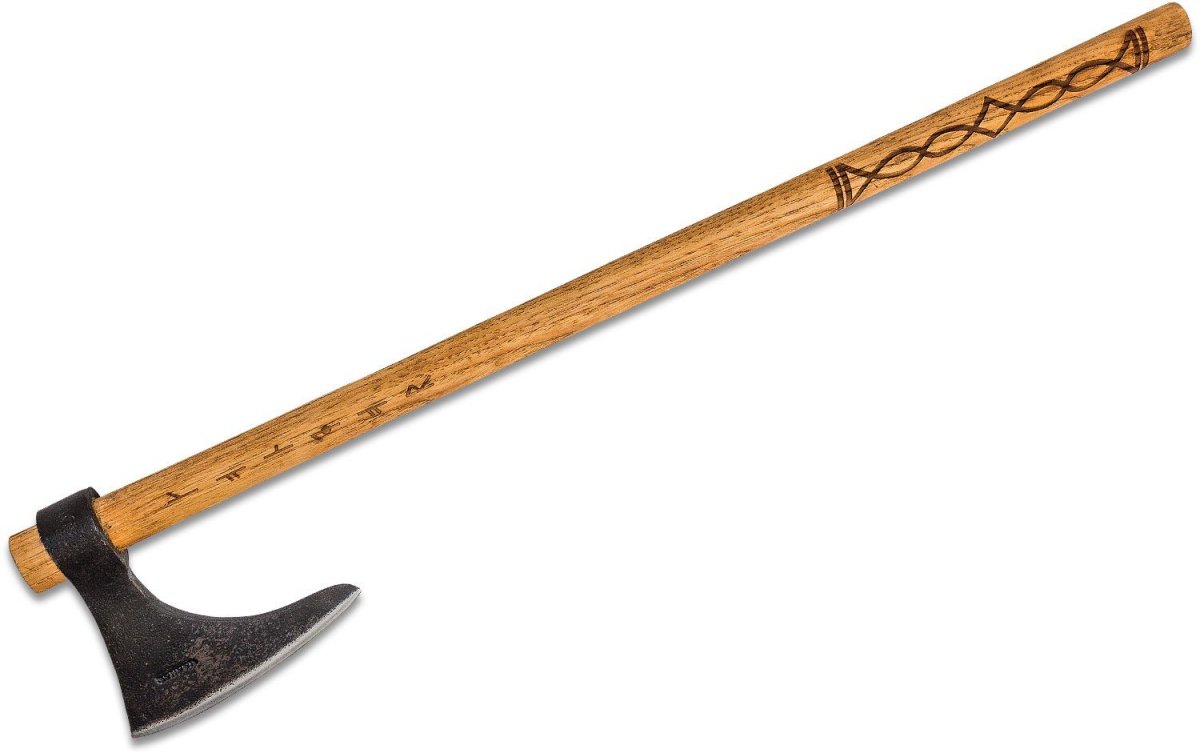
Modern Range
A basic axe is widely available in various sizes and weights. It has a relatively long blade on a narrow head. It’s versatile, but it’s usually used for chopping wood. The good news is that they can be bought in almost any size and weight, from small one-handed axes that serve well on trips or barbecues to truly massive axes weighing 1.6 kilograms. So, everyone can choose according to their preferences, intended use, or physical condition. A great example of a quality camping axe from our selection is the Hultafors Hultan.
HULTAFORS Hultan
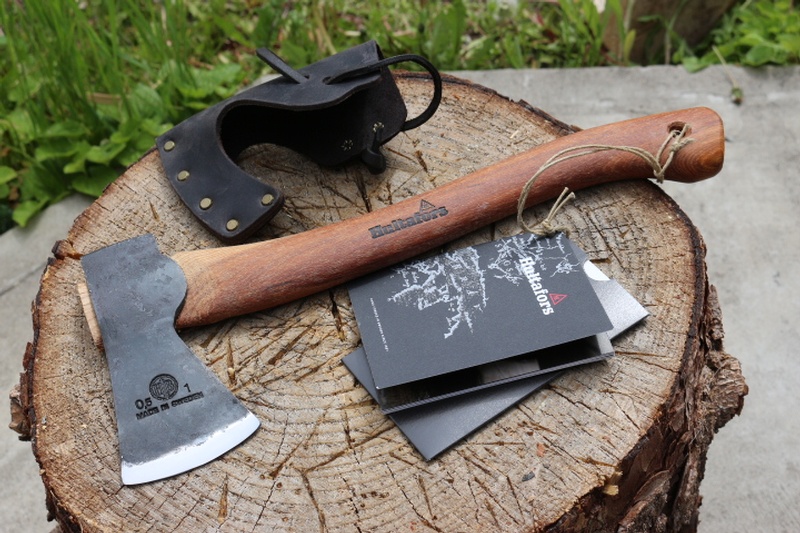
Anything larger is already a splitting axe. It is characterized by a massive head, sometimes weighing up to 4 kilograms. It usually has a shorter blade to penetrate wood more easily. The blade is set on a wide head, which gives the axe the necessary strength and, of course, increased weight, which is always helpful when splitting wood. Some of them have special ribs on the head, designed for easier wood splitting. You can buy, for example, the excellent Hultafors Hult from our selection.
HULTAFORS Hult – Splitting Axe
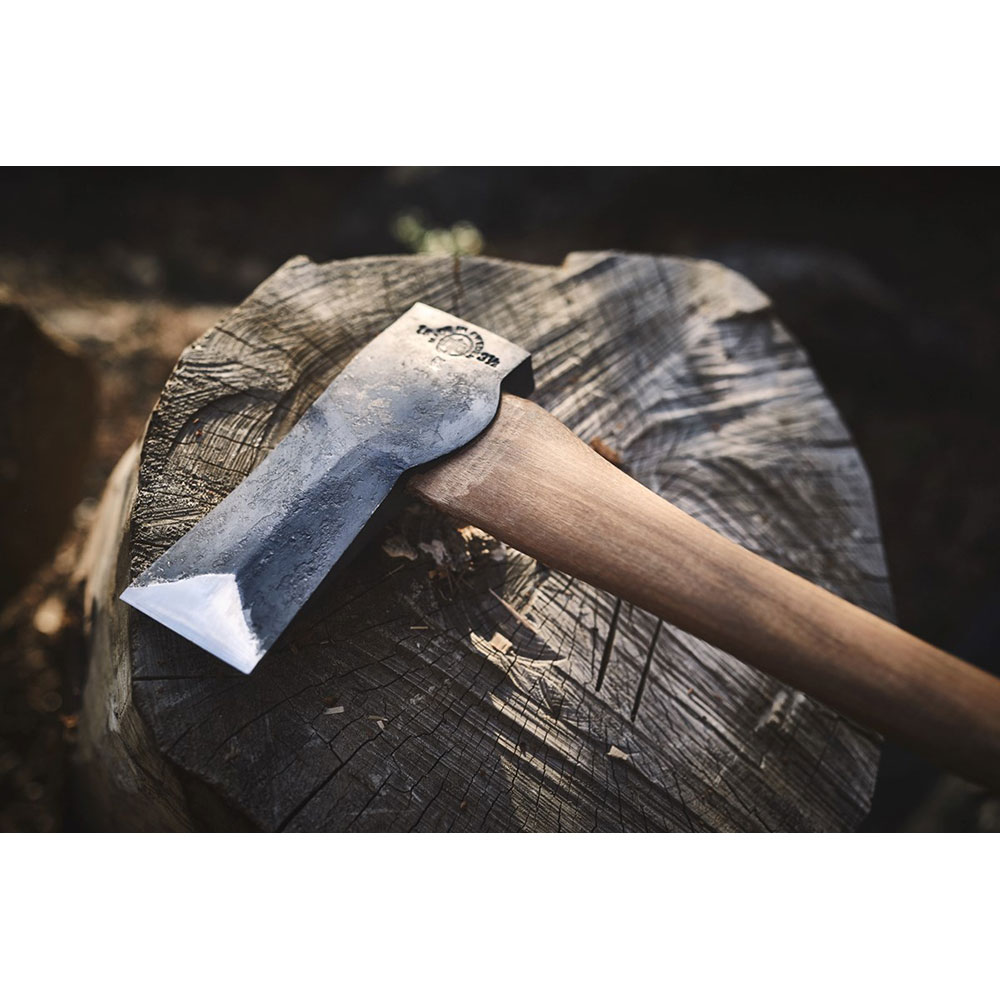
When it comes to splitting axes, a quick note: narrower heads split softwood better, while wider blades are better for hard (deciduous) woods.
Although these axes have massive heads and heavy butts, don’t be deceived by their appearance and don’t use them as splitting wedges, i.e., don’t strike them with a mallet or hammer.
In combat, rescue operations, and tactical applications, the tomahawk is a popular tool.
Originally a Native American axe, it was widely used in both peace and war. It became famous in the 18th century during the colonial wars on the new continent (America). It was well-balanced because it was used for throwing.
Its advantages are its relatively low weight, high chopping performance, and wide range of uses. A modern tomahawk can be used for chopping, cutting, prying, piercing, hammering, throwing... and much more!
Here are a few sexy examples from our selection :)
COLD STEEL WARHAWK

BOKER TOMAHOOK
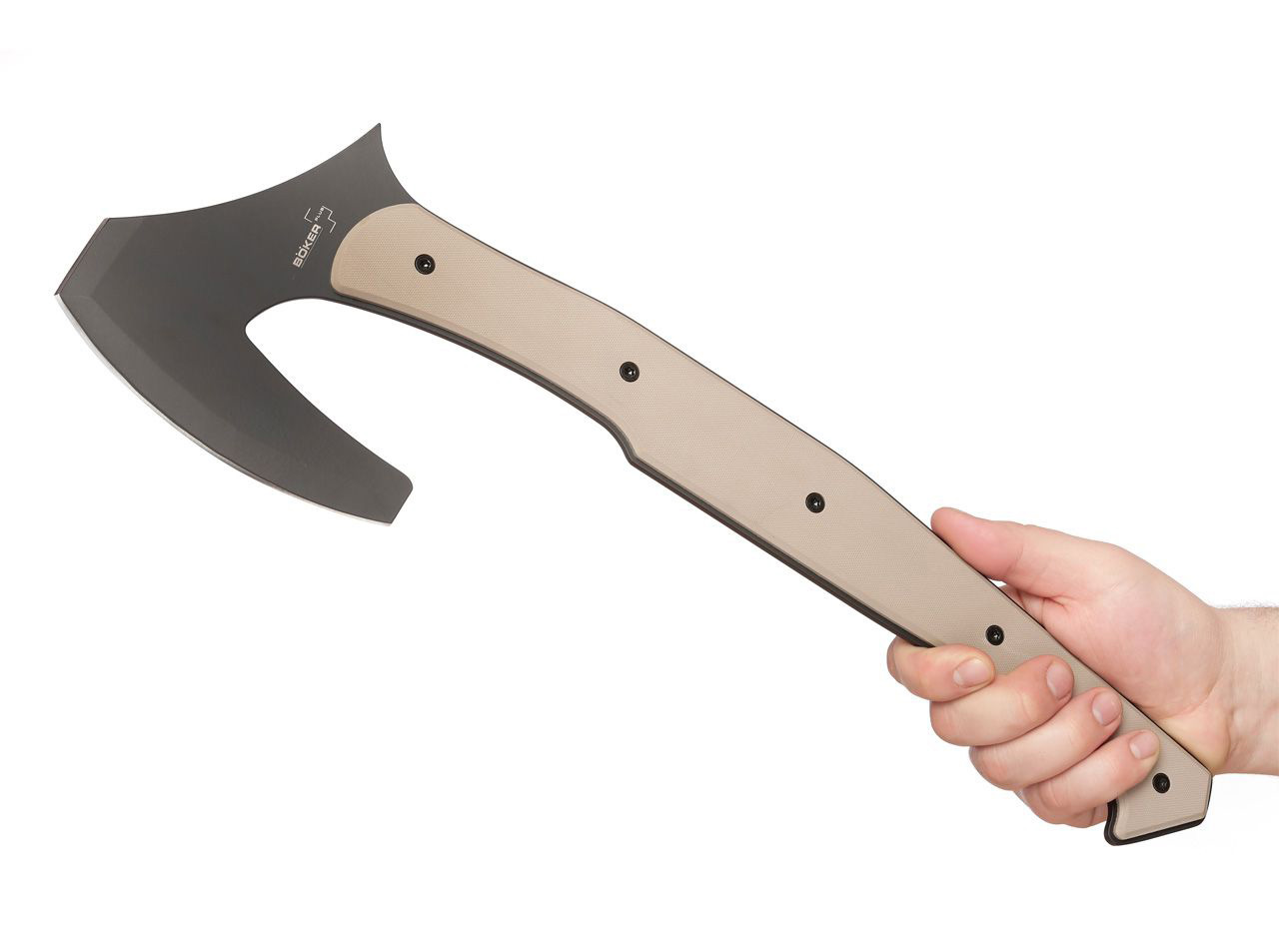
Tips for Maintaining Your Axe and Staying Safe
Never chop with an axe that has a loose head. Not only do you risk injury to yourself and those around you, but the loose head also damages the handle with every strike, worsening the axe’s condition.
If you have the option of choosing wooden handles, go for handles made of ash or hickory. The wider the growth rings in the direction of the blade, the better.
Don’t store your axe in damp conditions. But an environment that’s too dry can also damage the axe – specifically the handle, which may crack.
Protect the handle from excessive moisture and, to some extent, drying out with an oil coating. It can be special wood oil, but plain linseed oil will do.
Keep the axe blade sharp. Don’t chop roots from the ground with an axe meant for woodcutting. If nicks appear, sharpen the axe. Start with a coarse file, then use a sharpening stone and circular motions to restore the edge. You can mark the edge with a permanent marker – when it disappears, you know you’ve sharpened that spot.
When chopping, proceed carefully and let the weight of the head do the work for you.
Always chop at an angle for more effective cutting.
Always make sure your legs aren’t in the path of the axe head. In the event of a bad chop and the head bouncing to the side, injury can occur.
Try to always hit the target with the axe head. Striking with the wooden area behind the head weakens the handle and may eventually lead to the head breaking off from the handle.
By following these principles, you can have a lot of fun and get a lot of good work done. So, don’t hesitate to check out our selection!


























































































































































 Slovakia
Slovakia  Czech Republic
Czech Republic  Austria
Austria  Germany
Germany  Hungary
Hungary  Romania
Romania  Poland
Poland